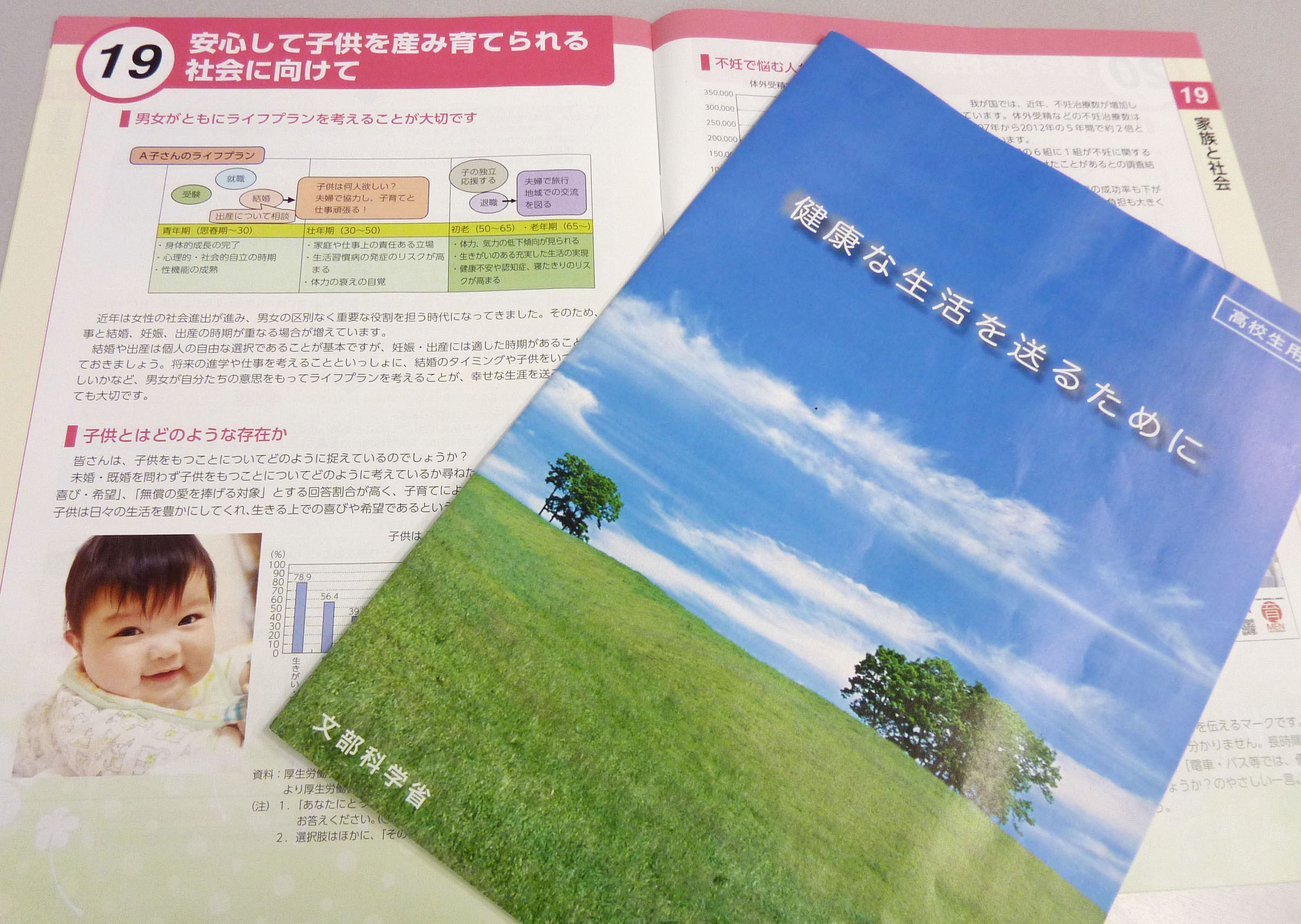The education ministry recently came under fire for supplementary materials it had distributed to high schools this summer. The materials were given out to help girls lead "healthier lives," but a chart about pregnancy included in the literature was found to be misleading.
According to sociologist Natsuki Nagata in an Aug. 31 online posting at Synodos.jp, the chart purports to show how a woman's ability to conceive and bear children changes over time, and implies that after the age of 22 it becomes more difficult. Nagata says it is "obvious" that the data used in the original chart was altered, since the survey cited can be checked online. The ministry said that the purpose of the chart was to "convey scientifically correct data" to students, but according to most research, a woman's ability to conceive does not change significantly until about the age of 35, and even then such findings, according to Nagata, must be qualified "through the filter of cultural and individual circumstances."
What the alteration seems to indicate is that the government wants young women to think that their chances of giving birth decrease after the age of 22, presumably because it wants them to have children as soon as possible. But regardless of the dishonesty of this tactic, the tactic itself represents a staggering lack of imagination. If young women really believe their chances of having a child lessens after their early 20s, they could very well give up having children altogether if they haven't found a suitable partner by that age.



